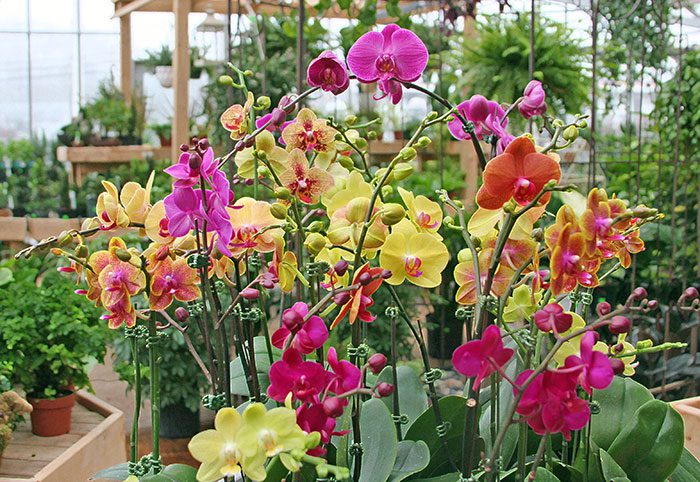Taking Care of Moth Orchids
Taking Care of Moth Orchids
Many of our customers ask “How do I take care of my moth orchid?” These plants are in the genus Phalaenopsis, and are one of the longest flowering and easiest to grow orchids. When you get a moth orchid that is just coming into bloom you will be enjoying those flowers for three to five months.

Here are some guidelines for caring for your orchid plant.
- How frequently you water will depend on what the orchid is planted in. These days most moth orchids are grown in plastic pots in sphagnum moss because this makes it easier for shipping. This growing medium doesn’t dry out quickly, so be careful not to overwater. Feel the top of the pot to gauge the moisture level (remove any decorative moss covering) or routinely water with two ice cubes once a week.
- Some worry about watering with ice cubes because they are cold. Recent research shows that using ice cubes causes no damage to the plants and doesn’t affect the length of flowering.
- If your orchid is potted in orchid bark, or if you’ve repotted it into a clay pot with bark, it might need more water, but again, once a week is usually enough when the plant is indoors.
- Keep your orchid in a bright place but not in hot, direct sunshine. An eastern facing window is perfect, or near but not directly in a western or southern window. As noted on this sheet from the American Orchid Society, a moth orchids leaves should be olive green – other colors indicate too much or too little light.
- Fertilize with an orchid fertilizer according to directions on the package, or put a teaspoon of time-release fertilizer such as Osmocote on the top of the pot every two or three months.
- After the blooms have finished, cut the stem back by a few inches but leave it as long as it looks firm and not dried; often the plants will form a new bloom spike from the nodes on the old one.
- After the blooms have faded is a good time to repot an orchid into a slightly larger clay pot using orchid bark. After taking the plant out of the plastic pot it came in (you might have to cut the pot off if the growth is so tight that it doesn’t easily slide out) pull away any dark, rotted roots and cut off any roots that have dried up. Gently remove the sphagnum moss as well as you can.
- Many people find that putting their orchid outside in a shady spot for the summer stimulates the production of new leaves and blooms. Water twice a week when the plant is outside and remember to keep up the fertilization. Do not put an orchid in direct sun, however…remember that in the wild these plants grow in trees, so are used to dappled light.

Posted in Uncategorized
Subscribe To Our Newsletter
Sign up for our weekly email about sales and events.
